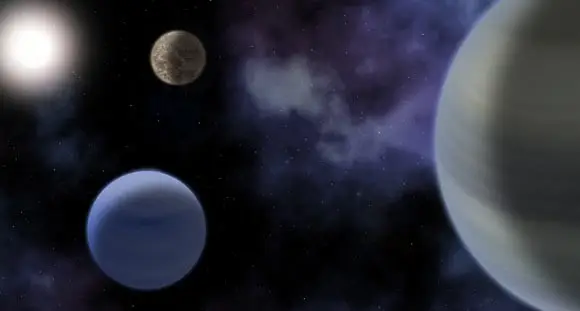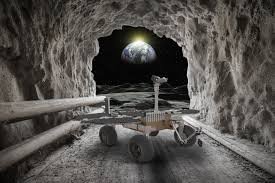Two Sub-Neptune Exoplanets Discovered; Astronomers continually make discoveries in the vast expanse of the universe that enhance our understanding of planets beyond our solar system. One of the latest breakthroughs is the discovery of two sub-Neptune exoplanets orbiting a subgiant star, TOI-6054, by NASA’s Transiting Exoplanet Survey Satellite (TESS). This exciting find opens up new avenues for studying exoplanet formation and the diverse nature of planets beyond our solar system.
What Are Sub-Neptune Exoplanets?
Before diving into the specifics of the discovery, it’s essential to understand what sub-Neptune exoplanets are. These planets are smaller than Neptune, the fourth planet from the Sun in our solar system. While Neptune has a radius about four times that of Earth, sub-Neptunes are typically planets with a radius smaller than Neptune but more significant than Earth. They often have thick atmospheres, composed chiefly of hydrogen and helium, and are considered a bridge between Earth-like planets and the gas giants of the outer solar system.
The Discovery of Two Sub-Neptune Exoplanets
NASA’s TESS was launched to search for exoplanets by monitoring stars across the sky. It made an incredible breakthrough with the discovery of two sub-Neptune exoplanets orbiting the star TOI-6054. Located around 650 light-years from Earth, TOI-6054 is a subgiant star in a stage of evolution that has started expanding and becoming calmer.
The two exoplanets, named TOI-6054 b and TOI-6054 c, are found to be within the “habitable zone” of their star, which means they are located at a distance where liquid water could potentially exist on their surfaces. However, both planets are not Earth-like in size and atmosphere, with thick hydrogen-rich atmospheres likely making them inhospitable to life as we know it.
Key Features of the Discovery
1. Size and Composition of the Planets
TOI-6054 b and TOI-6054 c are classified as sub-Neptune planets because their radii are smaller than Neptune but more significant than Earth. This size range makes them ideal subjects for understanding planetary formation processes and the types of atmospheres these planets can develop. Scientists believe these planets could offer critical insights into how more minor planets form and evolve about gas giants.
2. Location in the Habitable Zone
Although these planets have thick atmospheres, their positions in their star’s habitable zone raise intriguing questions about the potential for life. The habitable zone, also known as the “Goldilocks zone,” is the region around a star where temperatures are just right—not too hot or cold—for liquid water to exist. While these planets may not support life as we know it, their discovery helps scientists refine their search for planets that could harbor life in the future.
3. The Role of TESS in the Discovery
NASA’s TESS has revolutionized the search for exoplanets. By continuously monitoring the brightness of stars and detecting periodic dips caused by planets transiting in front of them, TESS has identified thousands of potential exoplanets. This discovery of two sub-Neptune planets around TOI-6054 highlights TESS’s capability to find exoplanets with a wide range of characteristics, further expanding our understanding of exoplanet diversity.
Why Is This Discovery Important?
The discovery of sub-Neptune exoplanets like TOI-6054 b and TOI-6054 c holds significant implications for astronomy and planetary science. Here’s why this find is essential:
1. Expanding Our Knowledge of Exoplanet Types
Before this discovery, astronomers had already identified several exoplanets, but many were more extensive, gas giant-type planets or Earth-like planets. With their thick atmospheres and intermediate sizes, Sub-Neptune exoplanets represent a new category of planets that might bridge the gap between more minor rocky planets like Earth and massive gas giants like Jupiter.
2. Understanding Planetary Formation
By studying planets like TOI-6054 b and c, scientists can gain valuable insights into how planets form around stars and how atmospheres develop over time. These exoplanets are in the size range where planetary formation processes become complex. Studying them helps scientists refine their models of how planets evolve, especially those with substantial atmospheres.
3. Implications for the Search for Habitable Worlds
Even though TOI-6054 b and c are unlikely to support life, their position in their star’s habitable zone adds to the ongoing search for habitable exoplanets. This discovery provides evidence that many stars may host planets that could support life in the future, expanding the search for exoplanets capable of sustaining life beyond Earth.
What’s Next for Exoplanet Research?
The discovery of these two sub-Neptune exoplanets marks the beginning of a larger effort to unravel the complexities of planets beyond our solar system. As TESS continues to observe more stars, astronomers anticipate uncovering even more exoplanets, some of which may share Earth-like characteristics or offer valuable clues about extraterrestrial life.
Looking ahead, future missions, such as the James Webb Space Telescope (JWST), will allow scientists to study the atmospheres of these and other exoplanets in unprecedented detail. This will provide deeper insights into their potential for supporting life, as well as their physical properties. In turn, research on planets like TOI-6054 b and c will inform the development of more advanced exoplanet detection methods, ultimately shaping the future of space exploration.
The discovery of TOI-6054 b and TOI-6054 c stands as a pivotal milestone in our quest to understand the remarkable variety of exoplanets in our galaxy. These sub-Neptune exoplanets offer a fascinating glimpse into planetary formation and atmospheric evolution. As technology progresses, scientists will continue to study these and other planets, gradually bringing us closer to discovering habitable worlds beyond Earth.
In looking toward the future of space exploration, the discovery of exoplanets such as TOI-6054 b and c highlights the tremendous potential of space missions like TESS. These discoveries not only fuel our curiosity about the universe but also spark our imagination about the possibility of life beyond our planet.




